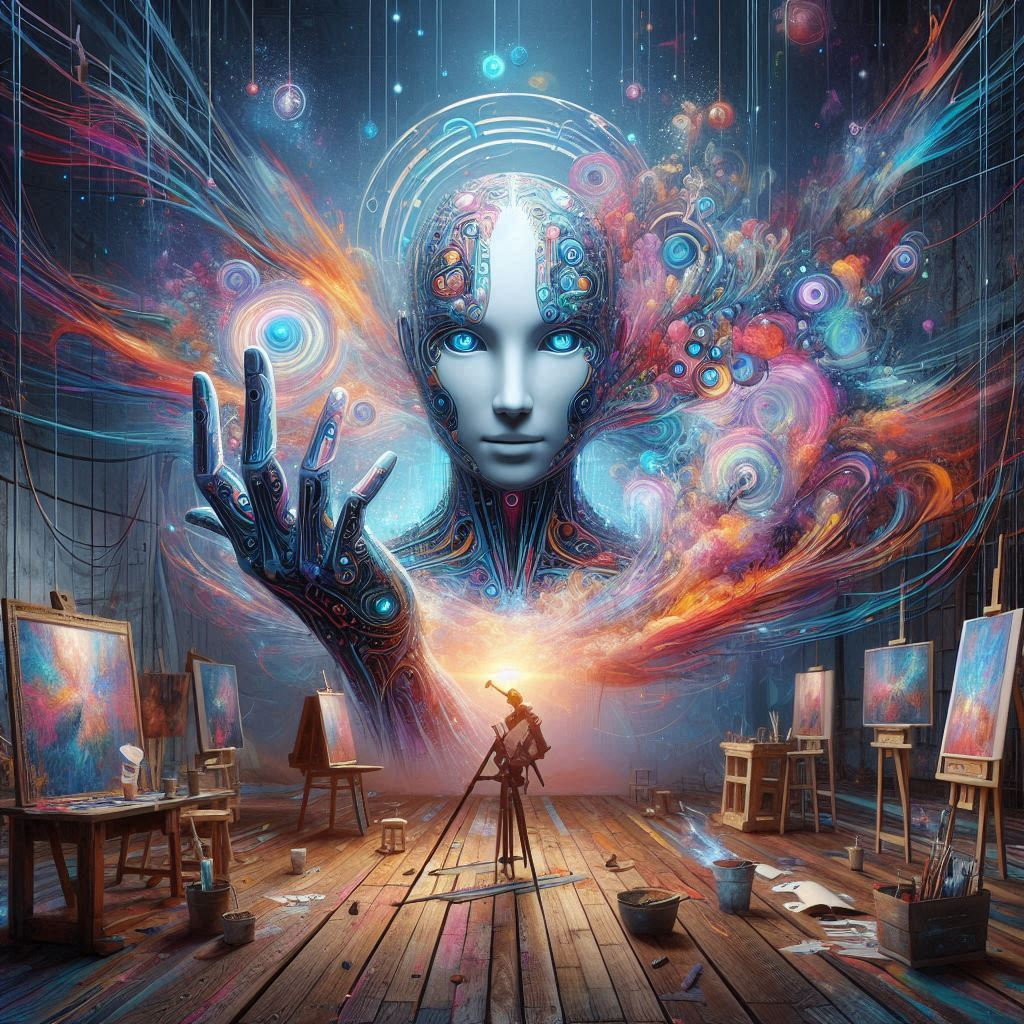Beyond Brushstrokes AIs Rise as a Creative Force in Art

Key Points:
- AI is transforming the art world through various techniques, including GANs and neural style transfer.
- AI can be a tool for artistic inspiration and collaboration but also raises questions about the nature of creativity and ethical considerations.
- The future of art will likely involve a collaborative relationship between humans and AI, leading to new forms of artistic expression.
Art has always been a realm of human expression, a way to capture emotions, ideas, and experiences through creative mediums. But what happens when artificial intelligence enters the artistic landscape? As AI technology rapidly advances, algorithms are demonstrating a surprising capacity for creativity, challenging our understanding of art and its creation. This raises profound questions: Can machines be genuinely creative? How will AI impact the future of art and the role of human artists?
A New Kind of Canvas: AI-Generated Art Takes Center Stage
AI art is no longer a futuristic concept; it’s a burgeoning reality. Algorithms trained on vast datasets of images, music, and text can now generate original works of art that span various mediums, from paintings and music to poetry and even code. These AI-powered tools are not simply mimicking existing styles; they are developing their unique approaches to creative expression, pushing the boundaries of what’s possible in the art world.
Decoding the Algorithmic Muse: AI Art Techniques
One of the most prominent techniques used in AI art is Generative Adversarial Networks (GANs). GANs consist of two neural networks: a generator that creates new images and a discriminator that evaluates them. The generator learns to create images that can fool the discriminator, leading to the generation of novel and realistic artwork. Another technique is neural style transfer, which allows algorithms to apply the style of one image to the content of another. This technique has been used to create stunning works of art that blend the styles of famous painters with modern photographs.
Showcasing the Creators: Notable AI Artists and Their Work
The field of AI art has seen the emergence of talented artists who are pushing the boundaries of what’s possible with this technology. Refik Anadol, a Turkish-American media artist, uses AI to create immersive installations that explore the intersection of architecture, data, and machine intelligence. Sofia Crespo, an Argentinian artist, uses GANs to generate images of fantastical creatures and explore the relationship between nature and technology. These artists and many others are demonstrating the potential of AI as a powerful tool for artistic expression.
The Algorithmic Muse: How AI Inspires and Assists Human Artists
Some artists view AI as a collaborator, a tool that can inspire new ideas and push the boundaries of their creative process. By using AI algorithms to generate variations on a theme, explore new color palettes, or create unexpected combinations of elements, artists can find fresh inspiration and unlock hidden potential within their work. For example, a painter might use AI to generate a series of variations on a landscape, exploring different perspectives and lighting conditions. A musician might use AI to create new melodies or harmonies, pushing the boundaries of their musical style.
Challenging the Definition of Art: Can Machines Truly Be Creative?
The rise of AI art raises fundamental questions about the nature of creativity itself. Can algorithms indeed be creative, or are they simply mimicking patterns learned from human-created data? Some argue that true creativity requires consciousness and intentionality, qualities that AI currently lacks. Others believe that AI’s ability to generate novel and aesthetically pleasing outputs demonstrates a form of creativity, even if it differs from human creativity. This debate is likely to continue as AI technology advances and its creative capabilities become more sophisticated.
Ethical Considerations: Navigating the Complexities of AI Art
The emergence of AI art also raises ethical considerations. Copyright issues are a significant concern, as it’s not always clear who owns the copyright to AI-generated artwork. The potential for bias in algorithms is another issue, as AI models trained on biased data can perpetuate existing stereotypes and inequalities. Furthermore, the impact of AI on human artists is a topic of debate, with some fearing that AI could displace human creativity. These ethical challenges need to be addressed to ensure that AI art is developed and used responsibly.
The Future of Art: A Collaborative Landscape
Regardless of where one stands on the debate about AI’s creative capacity, it’s clear that AI is transforming the art world. We are entering an era of human-AI collaboration, where artists and algorithms work together to explore new forms of artistic expression. This collaboration has the potential to unlock entirely new creative possibilities, blurring the lines between human and machine creativity.
Beyond the Horizon: The Evolving Role of AI in Art
As AI technology continues to evolve, we can expect to see even more sophisticated and nuanced forms of AI-generated art. AI algorithms may develop a deeper understanding of human emotions and aesthetics, allowing them to create works that resonate with audiences on a more profound level. The future of art may be a landscape where humans and AI collaborate to create works that are both technically impressive and emotionally evocative, pushing the boundaries of what art can be. This future holds both exciting possibilities and important ethical considerations that we must navigate thoughtfully.



Leave a Comment